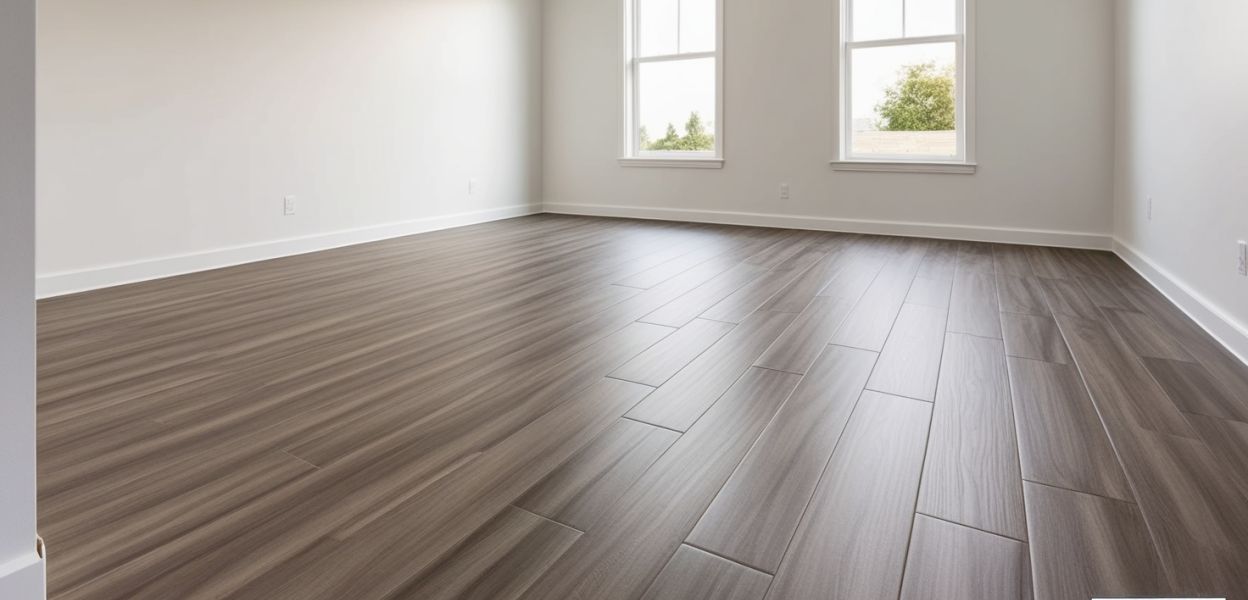How to prepare the floor for installing vinyl panels?

Preparing the Floor for Vinyl Plank Installation: Key Steps and Considerations
Table of Contents
Why is Floor Leveling Important for Vinyl Plank Installation?
Properly leveling the floor is crucial for a successful vinyl plank installation. Uneven surfaces can affect the durability and aesthetics of the flooring. Irregularities can lead to problems with plank installation and can cause them to wear out more quickly.
Step 1: Using a Level
One of the simplest ways to check the floor’s evenness is by using a level. Place the level on different sections of the floor, and mark any deviations from the horizontal.
Step 2: Using a Long Straightedge
Another method involves using a long straightedge placed on the floor. Check if the straightedge touches the surface uniformly, and mark any gaps or irregularities.
Step 3: Using Special Tools
For more precise measurements, special tools like laser measuring devices can be used. These allow for a detailed inspection of the floor’s level and help in preparing for any necessary adjustments.
What are the Consequences of Neglecting Floor Leveling?
Problems Related to Irregularities
Neglecting to level the floor can lead to various issues, including:
- Gap Formation: Irregularities can cause the vinyl planks to separate from each other, leading to gaps.
- Cracks in the Planks: Irregularities can cause cracks in the vinyl planks, affecting their durability.
- Installation Difficulties: Uneven surfaces can make installation challenging, potentially requiring reinstallation.
- Usage Problems: An uneven floor can lead to faster wear and tear of the planks and issues with their use.
How to Avoid Problems?
To avoid issues related to floor irregularities, take time to thoroughly prepare the surface before installing vinyl planks. Regularly check the floor’s evenness and use appropriate leveling materials to ensure the longevity and aesthetics of the flooring.
Is an Underlayment Necessary for Vinyl Planks?
Importance of Underlayment
An underlayment is often used to achieve a smooth and level surface before installing vinyl planks. It helps to correct floor irregularities, which is crucial for proper plank installation.
When is Underlayment Necessary?
An underlayment is particularly recommended when the floor is very uneven or there are significant height differences. If the floor is relatively even and well-prepared, an underlayment may not be necessary. However, it’s always best to check the vinyl plank manufacturer’s recommendations and consult with a professional to make the right decision.
Can Vinyl Planks Be Installed on an Uneven Floor?
Impact of Uneven Floors on Vinyl Plank Installation
Installing vinyl planks on an uneven floor can lead to various problems. Irregularities can affect the stability of the planks, leading to faster wear and issues with use.
Recommendations
In the case of an uneven floor, it’s recommended to thoroughly prepare the surface before installing vinyl planks. Remove any irregularities, and if necessary, use an underlayment or leveling compound. This will ensure that the planks are installed evenly, providing durability and aesthetic appeal.
What Tools and Materials Are Needed?
Tools
- Level
- Long straightedge
- Measuring tape
- Trowel
- Roller for spreading the compound
- Drill (for mixing the compound)
- Vacuum cleaner (for dust removal)
Materials
- Self-leveling compound
- Primer for self-leveling compound
- Vapor barrier film (if required)
- Protective film (if required)
Frequently Asked Questions (FAQ)
What are the most important steps in preparing the floor for vinyl plank installation?
The most important steps in preparing the floor for vinyl plank installation are: removing the old flooring, checking and leveling floor irregularities, possibly applying an underlayment, laying a vapor barrier film (if required), and acclimating the vinyl planks before installation.
How to level floor irregularities before installing vinyl planks?
To level floor irregularities, assess the condition of the substrate, prepare the necessary tools and materials, apply a primer, use a self-leveling compound, and after it dries, sand and clean the surface. Regularly checking the floor’s evenness will help achieve a perfectly smooth surface.
Is an underlayment required for vinyl planks?
An underlayment is recommended when the floor is very uneven or has significant height differences. In many cases, using an underlayment will help achieve a smooth and level surface, which is crucial for proper vinyl plank installation.
Can vinyl planks be installed on an uneven floor?
Vinyl planks should be installed on a level and smooth floor. Uneven floors can cause installation and durability problems. If the floor is uneven, it is recommended to prepare it thoroughly before installing vinyl planks.
.webp)
Comments